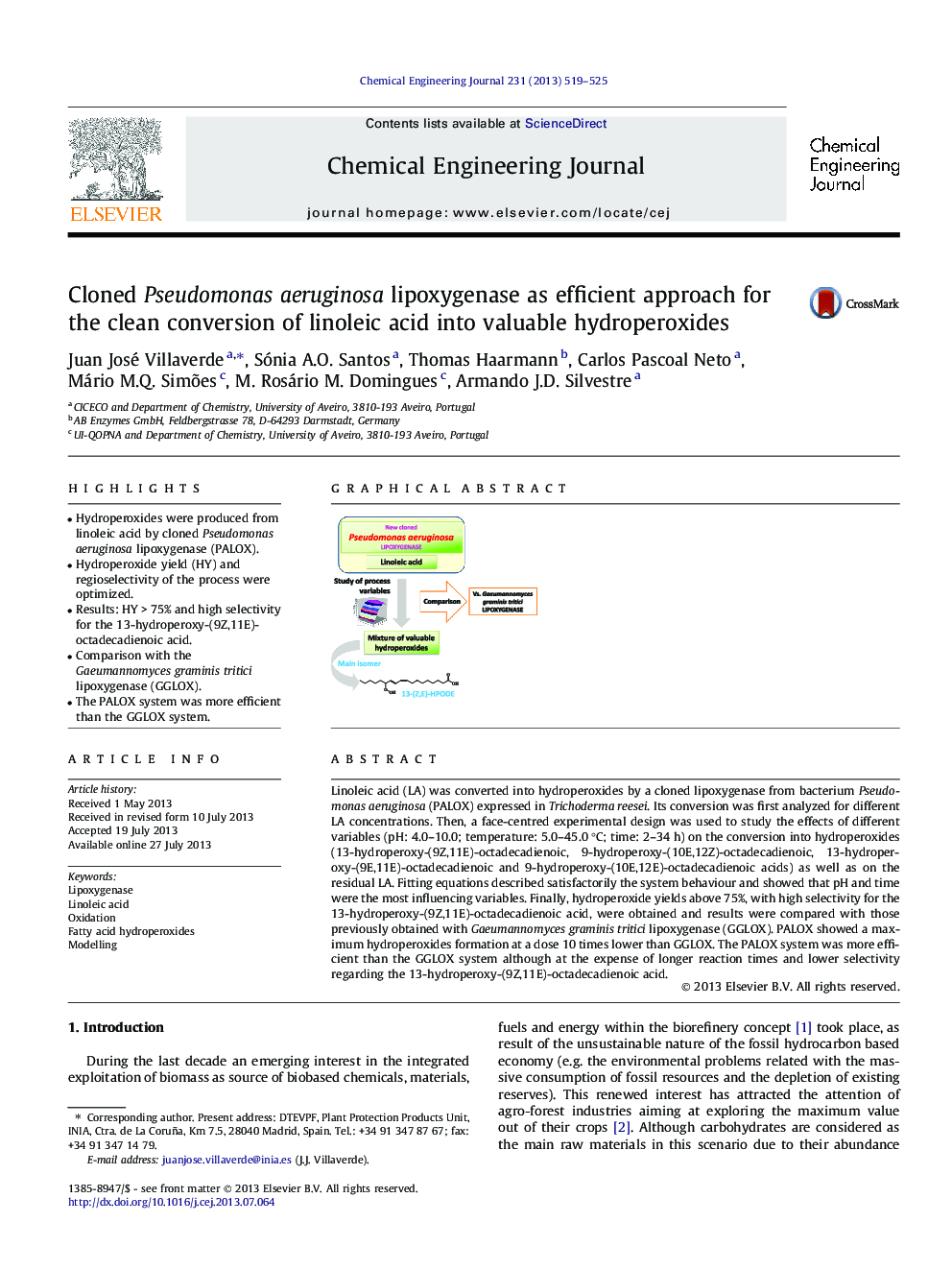| کد مقاله | کد نشریه | سال انتشار | مقاله انگلیسی | نسخه تمام متن |
|---|---|---|---|---|
| 148301 | 456408 | 2013 | 7 صفحه PDF | دانلود رایگان |

• Hydroperoxides were produced from linoleic acid by cloned Pseudomonas aeruginosa lipoxygenase (PALOX).
• Hydroperoxide yield (HY) and regioselectivity of the process were optimized.
• Results: HY > 75% and high selectivity for the 13-hydroperoxy-(9Z,11E)-octadecadienoic acid.
• Comparison with the Gaeumannomyces graminis tritici lipoxygenase (GGLOX).
• The PALOX system was more efficient than the GGLOX system.
Linoleic acid (LA) was converted into hydroperoxides by a cloned lipoxygenase from bacterium Pseudomonas aeruginosa (PALOX) expressed in Trichoderma reesei. Its conversion was first analyzed for different LA concentrations. Then, a face-centred experimental design was used to study the effects of different variables (pH: 4.0–10.0; temperature: 5.0–45.0 °C; time: 2–34 h) on the conversion into hydroperoxides (13-hydroperoxy-(9Z,11E)-octadecadienoic, 9-hydroperoxy-(10E,12Z)-octadecadienoic, 13-hydroperoxy-(9E,11E)-octadecadienoic and 9-hydroperoxy-(10E,12E)-octadecadienoic acids) as well as on the residual LA. Fitting equations described satisfactorily the system behaviour and showed that pH and time were the most influencing variables. Finally, hydroperoxide yields above 75%, with high selectivity for the 13-hydroperoxy-(9Z,11E)-octadecadienoic acid, were obtained and results were compared with those previously obtained with Gaeumannomyces graminis tritici lipoxygenase (GGLOX). PALOX showed a maximum hydroperoxides formation at a dose 10 times lower than GGLOX. The PALOX system was more efficient than the GGLOX system although at the expense of longer reaction times and lower selectivity regarding the 13-hydroperoxy-(9Z,11E)-octadecadienoic acid.
Figure optionsDownload as PowerPoint slide
Journal: Chemical Engineering Journal - Volume 231, September 2013, Pages 519–525